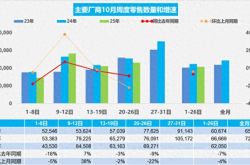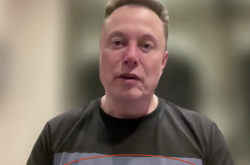Immediate Retail: Transforming the E-commerce Landscape
![]() 08/12 2025
08/12 2025
![]() 484
484

The battle for immediate retail is in full swing.
No one can deny the market potential of immediate retail. The strategic importance of "delivering everything within 30 minutes" based on scenario consumption is on par with the transformation of consumption patterns brought about by e-commerce over 20 years ago.
In this high-stakes game that will shape the next decade, Alibaba and Meituan have secured their places in the finals by leveraging their respective industrial strengths, while Douyin and JD.com have also carved out their niches.
However, due to insufficient strategic depth, Pinduoduo finds itself in a passive position in this suddenly ignited war.
Irreversible Trend
Imagine a morning where you receive slippers and socks from a delivery rider upon arriving at the office due to the morning rain; for lunch, you can order not only from Meituan but also from Taobao and JD.com; after exercising in the afternoon, you need new workout clothes and can have them delivered within half an hour of placing an order. Many young people have already embraced this lifestyle powered by immediate retail.
Over two decades ago, e-commerce emerged, allowing consumers to shop not just in stores but also online. Later, the takeout business evolved based on e-commerce, advancing to instant delivery, with the categories sold shifting from clothing, beauty products, and 3C products to catering and pharmaceuticals—items that satisfy immediate needs.
Today's immediate retail extends the concept of immediate satisfaction from catering and pharmaceuticals to nearly all categories. "Delivering everything within 30 minutes" is its allure.

Immediate retail is not a novel concept. Online supermarkets with front-end warehouses, such as Missfresh, Dingdong Maicai, and Pupu Supermarket, can be considered the first generation of immediate retail.
Later, with its gradually maturing takeout business, Meituan launched the "Retail + Technology" strategy, with horse races among businesses such as Meituan Youxuan, Meituan Maicai (later renamed Xiaoxiang Supermarket), and Meituan Flash. The business model of immediate retail gradually took shape.
After several years of gestation, under the combined effects of favorable timing, geography, and people, immediate retail has become the main line of competition in the internet industry this year.
The core demand points of the retail industry can be summarized as "more, faster, better, cheaper." E-commerce carved out a share of the offline retail pie mainly by focusing on "more," and the rise of new e-commerce represented by Pinduoduo strengthened "cheaper" on this basis.
With the continuous upgrading of the consumer market and the influence of smaller households and a more compact lifestyle, consumers' comprehensive demand for "more, faster, better, cheaper" has peaked, necessitating the "faster" aspect of immediate retail.
This increasing demand coincides with internet companies once again entering a business expansion cycle. JD.com was the first to break the mold, Meituan actively expanded its scenarios, and Alibaba also needed new business growth drivers, making the battle for immediate retail imminent.
After more than a decade of exploration and improvement by Meituan Waimai and Ele.me, the delivery capacity of the takeout delivery system can also significantly improve operational efficiency while meeting the delivery needs of immediate retail.
Why has immediate retail failed to grow significantly in its birthplace, the U.S. market? The fundamental reason is that the efficiency issue of the delivery system has not been resolved.
Moreover, offline commerce has been deeply entrenched in an adjustment period for over a decade, and everyone has struggled to find the optimal solution for years. Directly leveraging the traffic effect of internet platforms may be a promising choice.
Trillion-Yuan Market Landscape
In February of this year, before the Lunar New Year had even ended, JD.com announced its high-profile entry into the takeout industry; in mid-April, Meituan officially launched its independent immediate retail brand "Meituan Flash"; at the end of April, Taobao launched "Taobao Flash"; at the end of June, Ele.me was merged into Alibaba's China e-commerce business group, subsequently announcing a RMB 50 billion subsidy plan.
Market rumors suggest that with Jack Ma overseeing the battle and Jiang Fan leading the team, many veterans have returned, restoring Alibaba's fighting spirit from over 20 years ago when it outmaneuvered eBay, vowing to conquer the fortress of immediate retail.
Currently, the three core participants in immediate retail each have their distinct characteristics.
Meituan excels at planning. Five years ago, it upgraded its company strategy from "Food+Platform" to "Retail+Technology," spotting the opportunity in immediate retail.
Alibaba is adept at fighting tough battles. Once it discovers a breach in the city wall, it can immediately invest strategic-level resources to capture the city.
JD.com is skilled at creating momentum. Regardless of whether there are immediate results, it first fires a few shots to build up momentum before attacking, naturally increasing its chances of winning. This is how it handled Suning and Dangdang in the past.
In July, major immediate retail giants announced their daily order volume records: 150 million for Meituan; 80 million for Taobao Flash; and 25 million for JD.com.
Industry data shows that the immediate retail market size reached RMB 780 billion in 2024 and is expected to exceed RMB 2 trillion by 2030. Given the current momentum of the battle for immediate retail, the RMB 2 trillion target will likely be achieved ahead of schedule.

There has always been a misconception in the market that immediate retail will encroach on e-commerce's share, but in reality, its primary goal is to support offline consumption.
Currently, the takeout market penetration rate is 30%, with a market size of RMB 1.5 trillion. If we follow this logic, an immediate retail penetration rate of 30% in offline retail will be an astonishingly huge pie.
Judging from the current situation, the main players in the future drama of immediate retail will likely still be Meituan and Alibaba.
Meituan's biggest advantage is the user perception accumulated over more than a decade as the leader in the takeout market. When people are accustomed to using Meituan to order takeout and experience immediate retail, it will also be their first choice.
Meituan not only boasts tens of thousands of lightning warehouses and the most comprehensive delivery network but also a business system explored in recent years under the takeout ecosystem, including Xiaoxiang Supermarket, Waima Wine Delivery, Squirrel Convenience, and Happy Monkey Supermarket.
Within the Alibaba ecosystem, Taobao and Tmall have an annual net profit of RMB 200 billion, giving Alibaba the confidence to subsidize immediate retail with RMB 50 billion.
Of course, Alibaba's biggest trump card in the prolonged battle for immediate retail should be introducing the entire Alibaba ecosystem into the immediate retail ecosystem. At the end of June, Ele.me was merged into China's e-commerce business, and recently, Hema was included in the 88VIP membership system, which are just appetizers. In the future, there may also be Gaode Maps, Quark, Xianyu, etc.
By entering the takeout, hotel, and immediate retail sectors, JD.com has regained market attention, stepping out of the corner of e-commerce competition and transforming into an attacker in multiple segmented markets, putting pressure on competitors.
The impact of the takeout battle may not be the most crucial aspect for JD.com. The strategic value lies in the takeout business driving traffic and increasing the number and activity of main site users.
Douyin has already laid out its local lifestyle business, and with the onset of the battle for immediate retail, it participates in the most proficient way, attracting its online users to consume at nearby offline merchants.
In any market, never underestimate Douyin. It excels at using limited competition to find the simplest solution in the most complex market relationships, realizing the traffic monetization aspirations of a content platform.
It can be said that any enterprise involved in the internet and retail may be left behind if it does not participate in the trend of immediate retail.

Who is the Loser?
In this immediate retail race, several major e-commerce and internet giants have almost all found suitable positions, except for Pinduoduo.
Since the beginning of this year, Pinduoduo's share price has been on a rollercoaster ride. The primary factor of divergence comes from its performance pressure. In Q1 2025, the company's operating revenue was RMB 95.672 billion, a year-on-year increase of 10%, lower than market expectations; due to increased marketing investment, net profit was RMB 14.742 billion, a year-on-year decrease of 47%.
After all, the siphon effect of the Pinduoduo model is limited, and the e-commerce market has re-entered a stage of value growth, with limited growth in the attractiveness of low-price e-commerce to consumers and merchants. In fact, what users want is never the absolute low price but a relative balance of price, product, and service, which places higher demands on merchants.
As a result, we see that Pinduoduo, which has always focused on white-label products, has shifted its support for e-commerce business from "RMB 10 billion subsidy" to "RMB 100 billion support." The subsidies are for consumers, and the support is for merchants, with a clear shift in direction.
Additionally, Pinduoduo's absence from this competition for immediate retail, which is crucial to the future consumption landscape, makes the market unable to see its future growth potential in the domestic market.
Why, when the wave of immediate retail arrived, could Alibaba quickly launch Taobao Flash, and why did all the giants have corresponding actions, while Pinduoduo barely reacted? Because this company is young and too pure.
Founded in 2015, listed on the U.S. stock market in 2018, and becoming the largest e-commerce company in terms of user base in 2021, Pinduoduo's rapid growth can be described as a business miracle. Precisely because it grew too fast, it has yet to establish business depth.
Focusing purely on e-commerce, it concentrated on the sinking market in its early days and achieved rapid growth through extreme price competitiveness. This model made Pinduoduo proficient in the value of the flagpole theory but ignored the destructive power of the barrel effect.
Now, as the focus of the e-commerce market shifts from extreme low prices to scenario reengineering, Pinduoduo finds itself with almost no cards to play.

In recent years, major internet giants have gradually shelved community group-buying businesses with higher losses due to strategic focus considerations. Against this backdrop, Pinduoduo is still maintaining Pinduoduo Maicai to retain its strategic fulcrum. It is not ruled out that this will be the core for reconstructing its immediate retail consumption circle in the future.
However, fresh produce categories have always been more inclined to be traffic-driving products rather than profit cores. Even for front-end warehouses specializing in fresh produce, the gross profit margin is squeezed to only around 30%.
Therefore, involving Pinduoduo in the battle for immediate retail is no less challenging than creating another Temu. But it is also a battle that must be fought.








